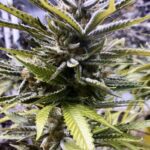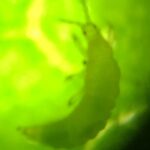Aquaponderings| ASC Magazine| Edition 32| November 2015|
Bob Flaherty from Nevada writes:
“I am design/building a 2200gal
AP system inside a 12×22 greenhouse in the Mohave Desert west of Las Vegas
400 gals for fish
400 gals for sump/settling tank
The rest are 100 gal tubs for deep rafts.
My plan for filtration is a 20 gal swirl filter feeding a 30 gal anaerobic biofilter then into an 20 gal aerobic bio ball filter then off to the beds.
My quandary is that to date nobody I’ve read or viewed mentions capacities in water flow across the various filters, as I’m
Trying to size my filters . Is there a filter recommendation/size of system .
I am already planning on using
2 in plumbing throughout to accommodate flow exchanges.
Any more ideas”?
Thanks in advance Bob Flaherty
NV
Hi Bob,
Firstly, in regards to filter sizing and flow rates (as well as surface loading rates) across filter devices, there are people who have looked into those types of questions, but you may not find the answers in “Online Aquaponics-land”.
You or anyone else looking to use/build a swirl filter (SF) for the purpose of solids capturing/settling in aquaponic set and setting might want to re-examine their choices. Swirl filters are just not the right tool for the job. They are wonderful for capturing particles with high specific gravities of around 2.65 times that of water(think sand particles and such), but perform relatively inadequately when used to capture materials whose specific gravity is closer to that of water. Much fish effluent (and it’s not all the same) has such a relatively light specific gravity, around 1.005 to 1.20 times that of water. This then increases the already high retention time necessary for an even remotely proper working, effective swirl filter.
The proper working of the swirl filter is then wholly dependent upon:
1). Surface loading (we’ll say that is the relationship of the concentration of fish effluent relative to the volume of water and physical dimensions of the swirl filter).
2). Retention time. As stated earlier, the swirl filter by design has rather narrow operating parameters in regards to the amount of time the filter takes to settle out relatively “lightweight” solids. These short comings are often then further exacerbated by us cheap-assed Aquapons who want to build these things out of a single 5 gallon bucket and some Uni-seals…to service a 700 gallon system.
The necessary retention time in the aquaponic swirl filter is usually much higher than the amount of time that our water actually gets to spend in the device. This is because we generally need to move large volumes of water every hour to satisfy the formidable BOD (Biological Oxygen Demand) that such systems require. Again, this (point 2 “long retention time”) is a function of design; a hydrocyclone such as a swirl filter/settler just is not able to do a proper job separating and settling out particles with such light specific gravities without careful consideration given to flow rate (needs be very slow) and retention time (very high for our purposes). Myself and the company that I worked for as an Engineering consultant designed, modified, calculated out such things for hydrocyclone filters for use in the steel making industry for different materials of varying specific gravities. Calculations for all of those things do exist and are used all the time. And as a capture device, the numbers bode poorly for the AP swirl filter.
By choosing a slightly different filter design you can increase your permissible, flow rate and shorten the necessary retention time needed to more effectively and efficiently capture and remove fish effluent.
The same cone bottom tank, Uni-seals and PVC pipe can be configured a bit differently to construct a Radial Flow Filter (RFF) design and achieve higher effective capture rates as compared to a swirl filter (all other things being equal in a side by side comparison study spanning a few years).
The surface loading rate for both filter designs used in the study was 0.0031m/3/s per square meter of settling area. But a much, much higher feed input was loaded into the RFF system, roughly 75% more feed went into the RFF system as opposed to the swirl filter system (SW).
Here are some of the results:

Be sure and take note of the difference between the daily feed rates (63.5 kilograms per day for the swirl filter compared to 100.4 kg/d for the RFF system).
The “settling device removal efficiency percentage” parameter is also very striking in favor of the RFF (SF-37.1% vs. RFF-77.9% efficiency).
Physically, the two appear very similar.Both are cylindrical tanks, both are often cone bottomed, etc…but physical appearance is about the only thing these two filters have in common.
The two have totally and completely different flow hydraulics from one another.
The swirl filter operates by injecting water tangentially at the outer radius of a conical tank. This causes the water to spin around the tanks center axis. This rotation creates a secondary radial flow towards the center of the conical tank, who’s inertial forces then do much of the work to settle out these solids (again, this design works great for sand and grit and other particles with high specific gravity).
The radial flow filter by comparison introduces water inside of the center of the tank inside of a ‘turbulence dampening cylinder’. The water coming into the center of the tank then flows outwards in the tanks radial direction. This radial flow away from the center of the tank produces progressively decreasing water velocity along the settling path.
The flow hydraulics created within a RFF are better at removing effluent solids with relatively light specific densities, than those created within a swirl filter.
The drawing on the left represents a swirl filter design. The drawing on the right represents a RFF design.

For your size system, you can build these things with either a 40 or 60 gallon cone bottomed tank. The diameter of your turbulence damping cylinder should be around 25% of your cone bottom tanks diameter. A 5 gallon bucket with the bottom cut off works well as a turbulence dampening cylinder.
It would also be a good idea to include a weir in your filter design. It will help to capture any really light weight particles that somehow make it towards the discharge outlet.
Again, this RFF design (over a swirl separator) will be much more effective at the high flow rates typical for aquaponic systems, especially ones with heavy-ish fish loads.
You could forgo all those tubs (and subsequent fittings piping etc)…and just build yourself a Deep Water Culture (DWC) trough out of some DuraSkrim and lumber. If you did this, you could insulate your grow troughs with extruded polysytrene (underneath and sides). Insulation which especially might come in handy in the Mohave desert. If you can bury your tanks, or otherwise insulate them, that would help with the day/night temperature swings.
Until next month…Happy Gardening Everyone!
VladJ
Questions or Inquiries? www.atria.garden
Contact us about custom hydroponic and aquaponic system design and installation, greenhouse or grow room design both Aquaculture Hydroponics and Aquaponics.
We encourage you to subscribe to the Aquaponics Survival Communities Magazine CLICK HERE







Very thorough, agree with you on all points. Thanks, Vlad
I started a dwc trough system without filters and even under stocked I get massive build up in the first trough. It will coat roots and everything. At a very minimum you want to screen out any fish eggs if using a species that eats roots. I have lost multiple crops due to tilapia making their way into the trough despite screen filters